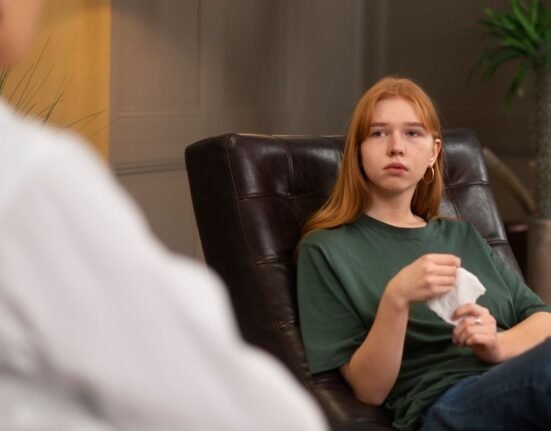In corners of therapy rooms where toys are scattered like stars on the floor and tiny worlds lie in wait within sand trays and dollhouses, recovery tends to begin not with words but with play. For many children, discussing fears, traumas, or emotional storms is a mountain even harder to climb. Their world is in the process of being built brick by brick, and language is merely one of the many tools in their emotional toolbox. Non-directive play therapy comes in there, gentle, patient, and profound.
Read More: Understanding Play Therapy Through the Lens of “Taare Zameen par”
What Is Non-Directive Play Therapy?
Non-directive play therapy (NDPT)-also referred to as child-centred play therapy (CCPT)-rests on the premise that children can heal themselves if they are presented with the best possible conditions. Whereas other more conventional types of therapy may have the therapist leading or directing the interaction, non-directive play therapy leaves the child in control, controlling what they wish to discuss, what toys they wish to play with to make things happen, and what they wish to be discussing through play.
It was first championed by Virginia Axline, a student of Carl Rogers (the founder of person-centred therapy). Axline, just as Rogers held, that adults could develop and self-actualise under the conditions of empathy, unconditional positive regard, and congruence. She broke from traditional views on child therapy to create a haven where her young patients could act out even the most tangled emotions in play, never explaining, never interpreting.
Read More: Why Integrative Therapy Could Be a Game-Changer for Mental Health
How It Works: The Magic of Holding Space
An initial non-directive play therapy situation occurs in a playroom which has been set aside and contains play materials selected for their relevance to non-literal, symbolic and expressive play, rather than their recreative value. These may include:
- Dolls with dolls’ objects (to symbolise family, authorities or inner selves)
- Art supplies (for free expression)
- Puppets (to project feelings onto)
- Sand trays and miniatures (to generate whole worlds)
- Costumes or masks (for exploring identity and feelings)
The child is at liberty to investigate and manipulate these items as they please. The therapist doesn’t interrupt or guide. Instead, they watch closely, reflect what they see in an accepting, affirming way, and sometimes subtly label the feelings or themes the child is communicating. This establishes trust, and the child trusts that they are being welcomed to explore and understand their inner life their way.
Here’s an example:
A kid could put his hands on a toy soldier and reenact battles with a dragon over and over. The therapist might say, “Oh, it seems your soldier is very brave. That darn dragon, he just keeps fighting it, no matter how hard it is.” This kind of reflection allows the child to experience being seen and understood, without the therapist’s interpretation or analysis of the communication.
Read More: A Comprehensive Guide to Therapeutic Art and Art Therapy
The Role of the Therapist: Present, Patient, and Attuned
Non-directive play therapy might appear passive on the surface, but the therapist is deeply active, just more quietly so. They must:
- Emotional safety: Establishing an atmosphere in which any feeling is allowed, rage, grief, fear, joy.
- Observe without judgment: Following the child’s lead, if play is aggressive, repetitive or messy.
- Reflect, don’t direct: Making empathic remarks, never asking questions or giving an analysis prematurely.
- Consistency and predictability: Giving children a secure base in contrast to the instability many experience in the outside world.
In these ways, the therapist becomes a safe haven. With time, the child internalizes this sense of safety and youthful ability to process their feelings and reconcile inner conflicts learning how to face feelings of pain, experience resolution, use new, healthier coping strategies and the like.
Read More: Therapy for the Algorithm:How Psychologists Are Being Hired to Shape User Behavior
Why Non-Directive? Isn’t Some Structure Good?
While it is true that most therapies also provide some sort of structure, non-directive play therapy is based on the radical idea that children can heal themselves if we provide them with the tools and the space in which to do so. It respects the child’s independence and internal intelligence. In a world where children are constantly being instructed on what to do, how to act, and how to feel, this autonomy can be revolutionary.
Not every child is a good candidate for simple non-directive therapy, of course, some accommodate a more directive therapist quite well, especially if they are on the autistic spectrum or have severe developmental delays. Sure, but for a lot of kids dealing with trauma, grief, transition- or adjustment-related stress, anxiety or behavioural issues, that is exactly the most powerful approach.
Read More: Cinema as Therapy: How Films Aid Mental Health in Times of Crisis
Evidence Speaks: Does It Work?
Studies have solidly established the overall effectiveness of non-directive play therapy, where children are between 3-12 years old. Studies indicate improvement in:
- Emotional regulation
- Social skills
- Self-esteem
- Lowered levels of anxiety, aggression, and depression
According to the Association for Play Therapy, there are numerous meta-analyses proving its clinical utility. What’s more, non-directive play therapy doesn’t just alleviate symptoms it builds lasting emotional resilience and inner trust in oneself.
Read More: Parallel Play and its Benefits
A Gentle Revolution in Mental Health
Basically, non-directive play therapy is a modality and an approach. What it keeps in mind in curing is this: that not every second is verbalised, labelled, or mastered. Curing sometimes appears as a child stirring up a storm while in silence, building an asylum for a scared bunny, or salvaging a toy from the fire over and over again before they can exhaust themselves.
This is not merely a matter of assisting the children to acclimatise but one of restoring to them their voice, in a way that is at ease for them. In a world that often hurries children to “grow up” or “move on,” non-directive play therapy whispers a different message: Take your time. I’m here. You’re safe. You’re seen. And there in that holy ground of play, where no one instructs them in how to feel or repair, children start the healing process-and flourish.
Whether you are a parent, educator, or future therapist, pay attention to the power of this skill that works behind the scenes. Listen to children play. Notice how they build, destroy, and rebuild. Never jump in to fix or sort. At times, the most therapeutic thing that we can do is just show up. Because sometimes healing isn’t something that is explained. Sometimes, it storms through a dragon, it speaks softly through a doll, or dances through the gentle beat of small hands, creating something new—block by block.
FAQs
1. What is non-directive play therapy in simple terms?
Non-directive play therapy is a type of counseling for children where they use toys, games, and creative tools to express their feelings instead of talking directly. The child leads the session, and the therapist quietly observes and supports without giving instructions or interpreting too soon.
2. How is it different from regular play or structured therapy?
Unlike regular playtime, non-directive play therapy happens in a specially designed space with a trained therapist who is emotionally present and attuned. And unlike structured therapy, the therapist does not guide the child’s actions—everything unfolds naturally, led by the child’s inner world.
3. Why is it helpful for children?
Children often struggle to express emotions verbally, especially when they’re dealing with stress, trauma, or big changes. Play is their natural language. In this therapy, they can work through confusion, fear, grief, or anger safely, without needing to explain it in words.
4. What kinds of problems can this therapy help with?
Non-directive play therapy can support children dealing with:
- Anxiety or fear
- Grief and loss
- Parental separation or divorce
- Trauma or abuse
- Behavioral issues
- Social difficulties
- Low self-esteem or confidence issues













Leave feedback about this